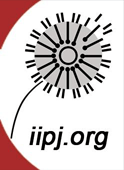Article Title
Priority Setting in Indigenous Health: Why We Need an Explicit Decision Making Approach
Abstract
Indigenous Australians have significantly poorer health outcomes than the non-Indigenous population worldwide. The Australian government has increased its investment in Indigenous health through the "Closing the Health Gap" initiative. Deciding where to invest scarce resources so as to maximize health outcomes for Indigenous peoples may require improved priority setting processes. Current government practice involves a mix of implicit and explicit processes to varying degrees at the macro and meso decision making levels. In this article, we argue that explicit priority setting should be emphasized in Indigenous health, as it can ensure that the decision making process is accountable, systematic, and transparent. Following a review of the literature, we outline four key issues that need to be considered for explicit priority setting: developing an Indigenous health "constitution," strengthening the evidence base, selecting mechanisms for priority setting, and establishing appropriate incentives and institutional structure. We then summarize our findings into a checklist that can help a decision makers ensure that explicit priority setting is undertaken in Indigenous health. By addressing these key issues, the benefits of an explicit approach, which include increased efficiency, equity, and use of evidence, can be realized, thereby maximizing Indigenous health outcomes.
Creative Commons License

This work is licensed under a Creative Commons Attribution-Noncommercial-No Derivative Works 4.0 License.
Recommended Citation
Otim, M. E.
,
Jayasinha, R.
,
Kelaher, M.
,
Houston, E. S.
,
Anderson, I. P.
,
Jan, S.
(2015).
Priority Setting in Indigenous Health: Why We Need an Explicit Decision Making Approach. The International Indigenous Policy Journal, 6(3)
. Retrieved from: https://ir.lib.uwo.ca/iipj/vol6/iss3/8
DOI: 10.18584/iipj.2015.6.3.8

